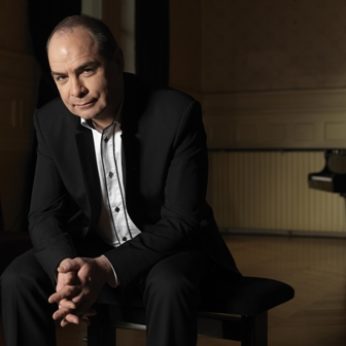Composer: Franz Schubert (b. 1797 - d. 1828)
Performance date: 01/07/2010
Venue: Bantry Library
Composition Year: 1828
Duration: 00:43:50
Recording Engineer: Anton Timoney, RTÉ lyric fm
Instrumentation: pf
Instrumentation Category:Solo
Artists:
Philippe Cassard -
[piano]

With this stupendous sonata, we all know that we have reached
endgame in Schubert’s battle with the black angel. As one critic has put it,
there is no late period Schubert so every lover of Schubert’s music is
tantalised by the ‘what if’ question. Scholars have been tormented by his
half-sketched Tenth Symphony and have pointed out that if had been blessed with
Beethoven’s span of life, he would have been seen as a contemporary of Chopin
and Liszt, Schumann and Berlioz rather than of Beethoven and Hummel. The B flat
sonata has an aura of valediction about it, but in another context we could
have seen in it the broad spaces of the first Razumovsky Quartet or the
Archduke Trio. There is no doubt that its completion a bare two months before
his death colours our perception of the work, for we know what his magisterial
vision has cost him.
This epic first
movement opens with a theme that defies time with its unhurried flow and noble
solemnity. When it reaches its cadence, the music pauses and a long, menacing
trill shudders in the bass before the theme is repeated. The second trill leads
directly into a song-like version of the theme before it is unleashed at full
power to overwhelming effect. The second subject group has two sections, the
second a combination of dancing triplets and short chords that become
fragmented as they proceed leading to the strange stuttering nine first-time
bars that force the pianist to repeat the exposition. Something is terribly
wrong, these bars seem to say, as the sinister bass trill is worked up to a
double forte. Now at the repeat our perception of everything is subtly changed
by our memory of that chill of fear. The development has moments of high drama
before the return of the main theme is heralded by appearances of the bass
trill. This mighty movement, nearly twenty minutes long, concludes with a last
miraculous song before that trill speaks its menace one final time.
This almost
peaceful Andante has much in common with that of the String Quintet, that same
air of profound spiritual contemplation in a place where time stands still. The
central section resounds to another of Schubert’s magisterial themes as if he
has risen above the pain and can contemplate it from afar. It is divided into
two sub-sections, each varied repeat becoming more active. When the first theme
returns it has a new murmuring bass figure linking each bar to the next that
has the effect of slowly bringing the contemplative mood to earth. This is
emphasized by C sharp minor melting into C major to radiant effect.
The airy, dancing Scherzo enters at
the same dynamic level so as not to disturb the mood too drastically while the
unusual marking con
delicatezza underlines the
point. The tune swings from treble to bass to middle voice, scurrying from one
unlikely key to another. The brief trio still dances but the step is more
stately.
The sonata-rondo is Schubert’s
preferred last movement style for it suits his tunesmith genius. The movement
opens with a bell-like chord that announces his joyful rondo theme and
reappears each time the theme comes around. No darkness troubles this carefree
movement where the interest never flags for a second and the unfettered
outpouring of tunes can only amaze and astonish. A presto coda closes with a
conclusive pulse-quickening crescendo.
Copyright © 2024 West Cork Music. All rights reserved.
Designed and developed by Matrix Internet